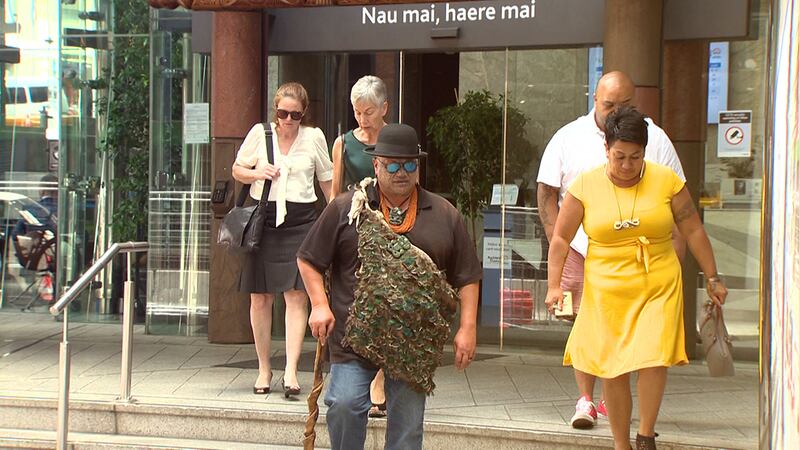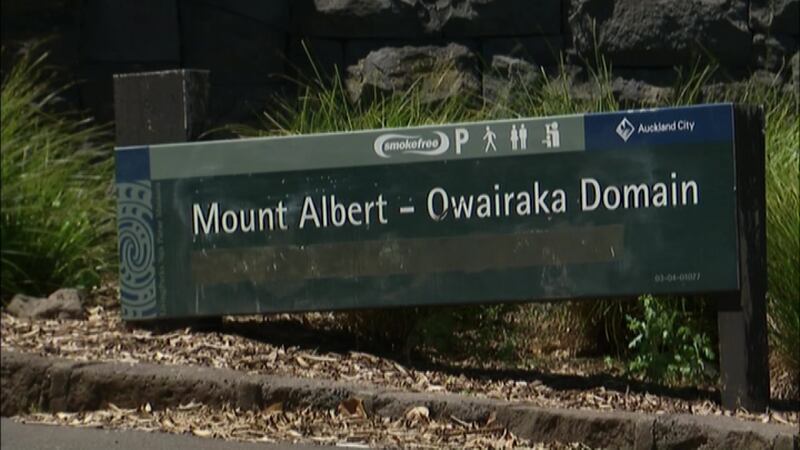Mataatua historian Pouroto Ngaropo questions the unity of the Tūpuna Maunga Authority. Source - File.
The Auckland Council group responsible for governing Auckland’s maunga are at the centre of ongoing controversies. The most recent issue, is the claim that Wairaka, the namesake of Mt Albert, was not the famous Mataatua ancestress, but was, a fairy.
Mt Albert Protestors and Mataatua historian Pouroto Ngaropo met with the governing group Tūpuna Maunga Authority seeking a resolution to the recent issues.

Pouroto Ngaropo (centre) and Honour the Maunga group meet with authority. Source - File.
Ngaropo told Te Ao Māori News there were plans in place to wipe Mataatua waka history from the Auckland rohe. However, the Authority chair Paul Majurey recognises that Wairaka is one of the rightful names for the maunga.
Majurey rejects the allegations regarding the Mataatua ancestress and has dismissed the claims as having “no factual basis.”
After this morning’s meeting, Ngaropo was satisfied that Mataatua waka can work towards a lasting solution. However, he is mindful, that the Auckland iwi that form the Maunga Authority have different views on his ancestress.

Maunga sign. Source - File
Wairaka has played an important role in this area of central Auckland, her name being used for a variety of things from schools, to tertiary institutions and political electorates. Mataatua waka names such as Ngātiawa Street in One Tree Hill, Toroa Street in Torbay, and even Ōwairaka Avenue, in Ōwairaka.
Ngāti Whātua Ōrākei, one of the 13 iwi that are part of the Tūpuna Maunga Authority have a different version of Wairaka’s history.
Their whakapono, is that Wairaka was a Patupaiarehe (ancient fairy people), who lived at the summit in “ancient times.”
Ka whiti te rā ki runga Ōwairaka maunga, tū te ao, tū te pō. This morning we gathered atop Ōwairaka (Mount Albert) for...
Posted by Ngāti Whātua Ōrākei on Wednesday, November 27, 2019
Historian Pita Tūrei begs to differ, saying that Wairaka, is neither Mataatua’s ancestress, nor Ngāti Whātua’s fairy. He says that there is no historical basis to back either Mataatua or Ngāti Whātua Ōrākei’s claims, blaming this on bad authorship, on the part of a Pākehā, named George Graham.
Tūrei’s claim is that Ōwairaka, is a shortened version of Te Wai o Rakataura. Rakataura, who was also known as Hape, is an ancestor of Te Kawerau ā Maki, and Kawharu.
Tūrei was preparing to discuss his tūpuna on a historical walk that was cancelled at the last minute by the Tūpuna Maunga Authority. He feels “mystified” at the cancellation. Tūrei stated that Rakataura’s status is “undisputed”.
The controversy began last year when Ōwairaka (Mt Albert) locals begun their occupation of the maunga. Protestors built a tent village on the summit to stop the Tūpuna Maunga Authority from cutting down 345 foreign trees and replacing them with 13,000 native seedlings.
A spokesperson from the Mt Albert exotic tree protectors called Honour the Maunga advised Te Ao Māori News that a judiciary review has been lodged with the High Court. The High Court will deliberate in March and release their review of how the authority "in Auckland Council" followed proper processes.
Ngaropo called the planned landscaping a "smokescreen" to conceal authority's plans to remove Wairaka's name from the maunga. Plans that the Authority reiterate, do not exist.
The authority plan to carry on with their landscaping. Tūpuna Maunga Authority chair Paul Majurey explains that due to concerns from an individual of Ngāti Awa descent, that the mandated iwi authority for Ngāti Awa have confirmed its support for the Authority’s plans.
Majurey reiterates that their decision to begin the landscaping was in part, decided by the 13 iwi who are represented at the authority. Furthermore, he says that the same iwi authority for Ngāti Awa supports tangata whenua to "make the best decisions," for their taonga.
